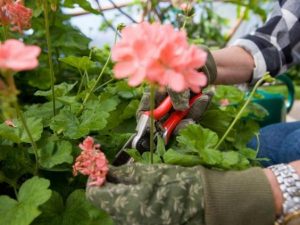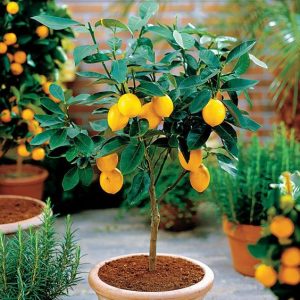What you Should Know before Pruning in your Garden

Pruning means trimming or removing shoots or branches from trees and bushes. The process results in better sap flow. If you prune correctly, you’ll help your plant grow better and look better.
You’ll get more fruit and flowers, and your plant will grow bigger. It will grow with more vigor than ever, the foliage will grow more, and the color of its stalk will be enhanced.
However, you should know what steps to follow if you want to keep your plants safe from pests and diseases. In fact, bad pruning can actually kill your bush or tree. Hence the importance of knowing how to do it well. This really is an essential part of gardening.
Don’t forget to prune regularly. Also, keep in mind that pruning isn’t the same for all plants:
- Trees and bushes should be pruned at the end of winter or the beginning of spring.
- Fruit trees should be pruned once they’re completely inactive — in other words when they have no fruit. This way they will flower even better later.
- Perennial plants should be pruned just before or after their growth period. We recommend winter.

Types of pruning
First of all, you need to know what kind of pruning you should do depending on the plant. The different kinds can be combined as well for best results.
Here are brief descriptions of each type of pruning:
- Formative: to get the form or shape you desire for ideal growth.
- Production: to stimulate the production of fruit, flowers, and leaves, mainly in fruit trees.
- Regeneration: to revitalize older plants (often plants that have aged prematurely). Usually done in the winter on structural branches.
- Clearing: to remove dry or overly mature leaves and flowers for appearance purposes.
- Trimming ends: to stimulate new branch growth, resulting in a more lush plant, by cutting off the ends of the stems.
- Thinning: to remove part of the foliage by pruning at the base of weaker or poorly located branches. Results in better air flow.
Tips before you begin pruning
Here are a few things to keep in mind before you begin the process, because it’s more complicated than it may seem. Before anything, figure out the right time to prune.
Consider the morphological and physiological characteristics of each of your plants. Each one is unique and its pruning needs are too. Never prune during their growth period.
Remember that some plants (actually just a minority of them) should not be pruned, like plants without stems.
As for tools (scissors, gloves), they should fit the job at hand. Pick the right ones for the size of the branch, not the overall size of the plant. They should all be clean and sharp. (Use a gentle file to sharpen them.)

More tips for pruning
Before you get going, give the dead, diseased, and damaged parts of your plant some attention. Determine whether the branches you’re going to prune are dead or not because that will make your job a lot easier.
Likewise, pay attention to the weather. The season isn’t the only thing that matters; the temperature does too. The lower the temperature (and the worse your plant adapts to it), the later you should prune.
It may be easier to cut off big portions of a branch in one go, but that will give you problems later. You’ll have to do more regular touch-ups than if you prune with more precision.
If you want to remove an entire plant, make sure that it actually is dead. To do so, scrape the bark a bit: if it’s green or white, it still has some life in it. Even if it’s close to death, it still may rebound a few months later. Only if it’s brown is it dead.
One last thing to think about: if you look at how the branches are positioned, you’ll get a good idea of how to prune. Cutting off a few little branches isn’t the same as cutting off big, thick ones.
Conclusion
We hope these tips will help you when you head out to prune in your garden. Don’t forget how important it is!
Pruning means trimming or removing shoots or branches from trees and bushes. The process results in better sap flow. If you prune correctly, you’ll help your plant grow better and look better.
You’ll get more fruit and flowers, and your plant will grow bigger. It will grow with more vigor than ever, the foliage will grow more, and the color of its stalk will be enhanced.
However, you should know what steps to follow if you want to keep your plants safe from pests and diseases. In fact, bad pruning can actually kill your bush or tree. Hence the importance of knowing how to do it well. This really is an essential part of gardening.
Don’t forget to prune regularly. Also, keep in mind that pruning isn’t the same for all plants:
- Trees and bushes should be pruned at the end of winter or the beginning of spring.
- Fruit trees should be pruned once they’re completely inactive — in other words when they have no fruit. This way they will flower even better later.
- Perennial plants should be pruned just before or after their growth period. We recommend winter.

Types of pruning
First of all, you need to know what kind of pruning you should do depending on the plant. The different kinds can be combined as well for best results.
Here are brief descriptions of each type of pruning:
- Formative: to get the form or shape you desire for ideal growth.
- Production: to stimulate the production of fruit, flowers, and leaves, mainly in fruit trees.
- Regeneration: to revitalize older plants (often plants that have aged prematurely). Usually done in the winter on structural branches.
- Clearing: to remove dry or overly mature leaves and flowers for appearance purposes.
- Trimming ends: to stimulate new branch growth, resulting in a more lush plant, by cutting off the ends of the stems.
- Thinning: to remove part of the foliage by pruning at the base of weaker or poorly located branches. Results in better air flow.
Tips before you begin pruning
Here are a few things to keep in mind before you begin the process, because it’s more complicated than it may seem. Before anything, figure out the right time to prune.
Consider the morphological and physiological characteristics of each of your plants. Each one is unique and its pruning needs are too. Never prune during their growth period.
Remember that some plants (actually just a minority of them) should not be pruned, like plants without stems.
As for tools (scissors, gloves), they should fit the job at hand. Pick the right ones for the size of the branch, not the overall size of the plant. They should all be clean and sharp. (Use a gentle file to sharpen them.)

More tips for pruning
Before you get going, give the dead, diseased, and damaged parts of your plant some attention. Determine whether the branches you’re going to prune are dead or not because that will make your job a lot easier.
Likewise, pay attention to the weather. The season isn’t the only thing that matters; the temperature does too. The lower the temperature (and the worse your plant adapts to it), the later you should prune.
It may be easier to cut off big portions of a branch in one go, but that will give you problems later. You’ll have to do more regular touch-ups than if you prune with more precision.
If you want to remove an entire plant, make sure that it actually is dead. To do so, scrape the bark a bit: if it’s green or white, it still has some life in it. Even if it’s close to death, it still may rebound a few months later. Only if it’s brown is it dead.
One last thing to think about: if you look at how the branches are positioned, you’ll get a good idea of how to prune. Cutting off a few little branches isn’t the same as cutting off big, thick ones.
Conclusion
We hope these tips will help you when you head out to prune in your garden. Don’t forget how important it is!







